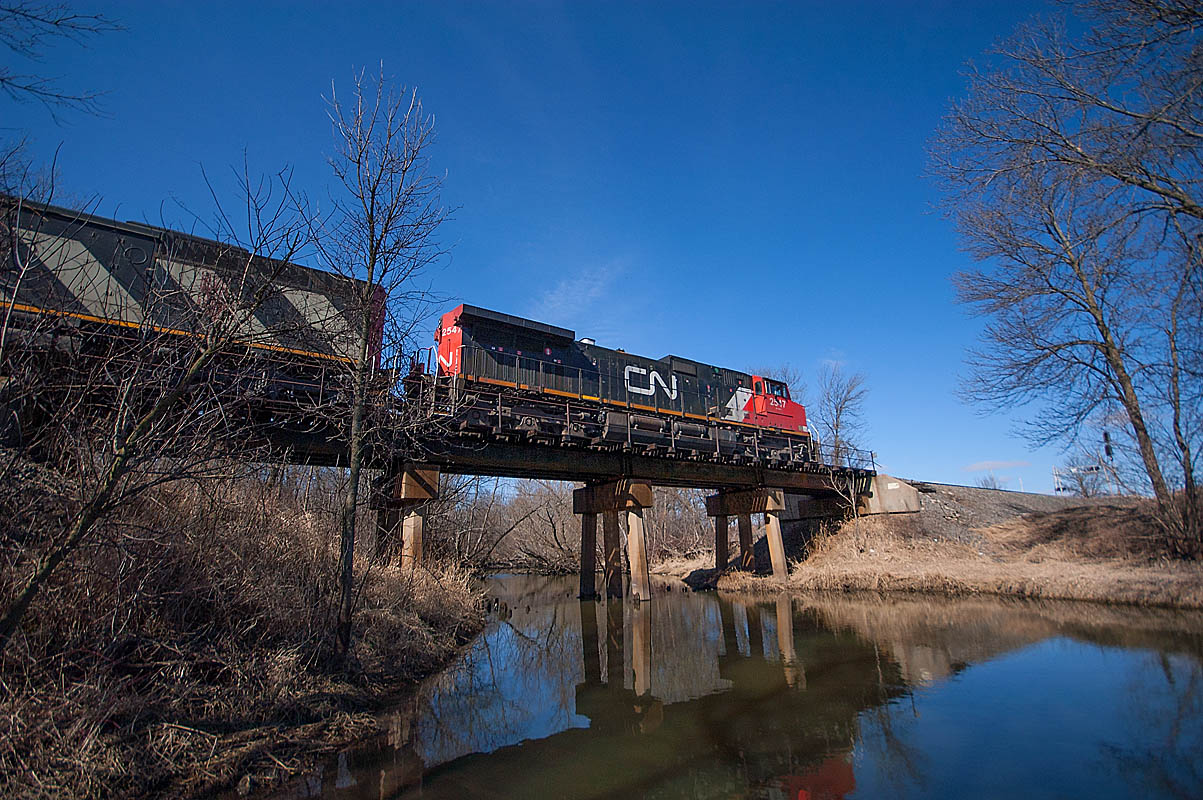When most of us think of railroad bridges, we recall structures from the magnificent to the mundane, whether in spectacular natural scenery or gritty industrial environments. We also tend to think of bridges as independent structures that, as long as they carry trains that don’t exceed their tonnage rating, will last forever with periodic inspections and relatively little maintenance.
The United States railroad system, including big Class I railroads and short lines, has more than 76,000 bridges, according to the U.S. Government Accountability Office. And, there’s a lot going on with these bridges, as well as bridge ends, when traffic moves over the line. Sections of track adjacent to bridge abutments can be trouble spots for maintenance-of-way teams resulting in bumpy rides for passengers and freight and shortened track service life. They can also cause derailments. The problems arise because the support structure for track approaching the bridge is typically not as strong, or “stiff” as the bridge itself, resulting in low spots at the bridge ends.
David Clarke, University of Tennessee Center for Transportation Research director, outlines a scenario where rails start out level with each other and on both sides of the bridge approach.
“That’s ideal,” Clarke says.
But when a heavy train rolls over track, it pushes rails, ties, and ballast downward in a phenomenon known as deflection. Bridges are practically inflexible compared to track and deflect little.
So, when a train rolls toward a bridge, it must suddenly roll up hill putting extra force into a bridge approach in the track and bridge ends.
Over time, this pounding can cause ties and rails at bridge ends to sink, pushing any water underneath the ballast to the surface, creating mud around the ties and rails. In certain situations, the pounding can also pulverize ballast or degrade stone and concrete abutments.
These forces also create significant vibrations that can affect the structural integrity of the bridge, weakening piers, girders, and their connections.
Mike McGinley, a retired railroad civil engineer, points out that proper soil engineering practice for the embankment is key to maintaining the height of the rail equal to the rail height on a bridge while a train passes. The best method to slow sinking soil is to place the soil in layers under the ballast of about 6 inches each, adding water if needed to boost the soil’s density and then vibrate or tamp it down to stiffen all the layers as much as possible. McGinley says that, “even in areas where the climate is often wet and damp, quality soil types and proper construction of the embankment are the most important factors in preventing low spots.”
If the bridge ends are properly maintained, the amount of additional force between the bridge ends and the bridge will be small enough that little or no damage will occur on the track or the bridge. The ability to properly maintain bridge ends is often thwarted in practice due to time and resource constraints.
One effort to try to equalize the stiffness between bridge ends and the bridge is the Loadmaster Timber Tie fastener. Amsted RPS, now Progress Rail, started developing the plate five years ago.
Darrell Cantrell of Cantrell Rail Services and Thomas Bourgonje, a regional chief engineer for Canadian National tested the effectiveness of this plate about three years ago on an open deck bridge in western Alberta, Canada. These plates are 27 inches long and 10 inches wide. The double steel plate encases nine rubber inserts that are 2 inches wide and 7.6 inches long. The test was successful, in that the plates reduced the impact loading on the bridge, as well as on the bridge ends.
Ballast is often used on concrete or steel deck bridges in order to get the track on the bridge to the proper elevation relative to the approaches. Ballast deck bridges with a concrete or steel ballast trough may employ a ballast mat of rubber, urethane, or a similar material. Placed beneath the ballast, the mat dampens the impact load on the bridge, much like the tie plate pads on open deck bridges. The ballast mat can also reduce the tendency of the ballast to crumble, which can foul the ballast.
While all bridge ends must be maintained properly, McGinley says that the Northeast Corridor and other older corridors seem to have the best bridge-end conditions. However, he adds, “any roadbed constructed to modern soil compaction specifications and not rushed to completion probably will perform well.”
McGinley also estimates that of the 76,000 railroad bridges in the United States, that about 45 percent are problem free, 48 percent require annual corrections, and 7 percent require correction more than once each year.
This story originally appeared in the June 2016 issue of Trains Magazine.















This article comes home to me as a westbound BNSF grain train derailed at the west end of a bridge in Fridley, MN about three years ago.
I know this full well. Last years storms washed out a bridge near Fuller Curve outside of Gooding Idaho. I was on #844 with the Operation Lifesaver special and we had to disconnect the engines to get the cars across. Every bridge must be checked because if you let a bridge sit the ties will rot, the ballast will sink, the piers can get washed out, and trains can derail. we had to use railroad ties to hold the bridge up while work crews replaced it and #844 made it across in one piece.
While a well-compacted subgrade is good, so is a deep, well-drained ballast of around 18″ below the ties. The bridge’s deflection under a car can impart a bounce off the bridge end, further aggravating pounding on adjacent ballasted track.